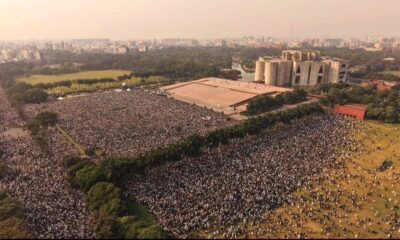Bangladesh Breaking News
Bangladesh protests: Top court scraps most job quotas after violent unrest – BBC.com
The decision by Bangladesh’s top court to scrap most of the quotas in government jobs marks a critical juncture in the nation’s political landscape. This ruling comes after weeks of violence. Clashes that have left more than 100 people dead, spotlighting deep-seated issues within the country’s governance and criminal structure policy reservedDeadly Protests c sector jo. Bs for relatives of veterans from the 1971 War of Independence. Court’s decision to reduce this to just 5% is a significant move toward meritocracy, yet ongoing unrest suggests deeper, unresolved tensions.
Ruling and Its Immediate Impacts
Law Minister Anisul Huq has assured that the government will implement the court’s ruling within days, but student leaders remain skeptical. Ir protests are driven not only by demands for fair employment practices but also by broader grievances against the current administration. The ruling, which now mandates that 93% of public sector jobs be filled based on merit, addresses one of the key demands of protesters. However, the movement’s coordinators, like Nusrat Tabassum, insist that action must continue until all our demands are met, including justice for those killed in protests and the release of detained leaders.
Government’s Response and Continued Protests
Prime Minister Sheikh Hasina’s administration has faced accusations of heavy-handedness, with reports of brutal force being used against demonstrators. The government’s response has included a curfew, a communications blackout, and widespread arrests, which have only fueled further unrest. Sheikh Hasina, in power since 2009, is facing significant criticism for her handling of the situation, with many accusing her of using the quota system to solidify the ruling Awami League’s influence.
Broader Implications for Bangladesh
protests have highlighted systemic issues such as corruption, lack of accountability, and escalating cost of living. Se underlying problems have been exacerbated by the job market crisis, with estimates suggesting that around 18 million young Bangladeshis are currently seeking employment. The high unemployment rate among university graduates compared to less-educated peers adds another layer of frustration and despair among youth.
Table: Key Developments in Bangladesh Quota Protests
| Date | Event | Government Response |
| Early July | Mid-July | Internet shutdown, phone service restrictions |
| Police in plainclothes forcibly discharge leaders | Clashes between students and police | Excessive force used, 100+ killed, 4,000+ arrested |
| Late July | Court rolls back most quotas | Protests suspended |
| Late July | Student leaders abducted from hospital | Police in plainclos forcibly discharge leaders |
| Ongoing | Calls for justice and ministerial resignations | Government dismisses criticisms, blames political rivals |
Prospects and International Attention
ongoing unrest has also attracted international attention, with demonstrations taking place outside Bangladesh. In the US, Bangladeshi students have protested outside the White House and in Times Square, demanding justice for victims of the government’s crackdown. Similar disturbances have occurred in the UK, highlighting the global resonance of the issue.
Bangladesh’s situation underscores the critical need for meaningful reforms that address both immediate and structural problems. The court’s ruling is a step in the right direction, but without addressing broader socio-political grievances, unrest is likely to continue. The international community must keep a close watch on Bangladesh and press for human rights and democratic principles to be upheld.
For furry details on unfolding events, visit BBC’s report and follow updates on AFP’s news feed.
- Bangladesh protests: Top court scraps most job quotas after violent unrest BBC.com
- Bangladesh quota protests live: Students vow to continue demonstrations Al Jazeera English
- Bangladesh’s top court rolls back some job quotas after deadly protests, local media report CNN
- Bangladesh top court scraps most job quotas that triggered deadly protests Reuters.com












